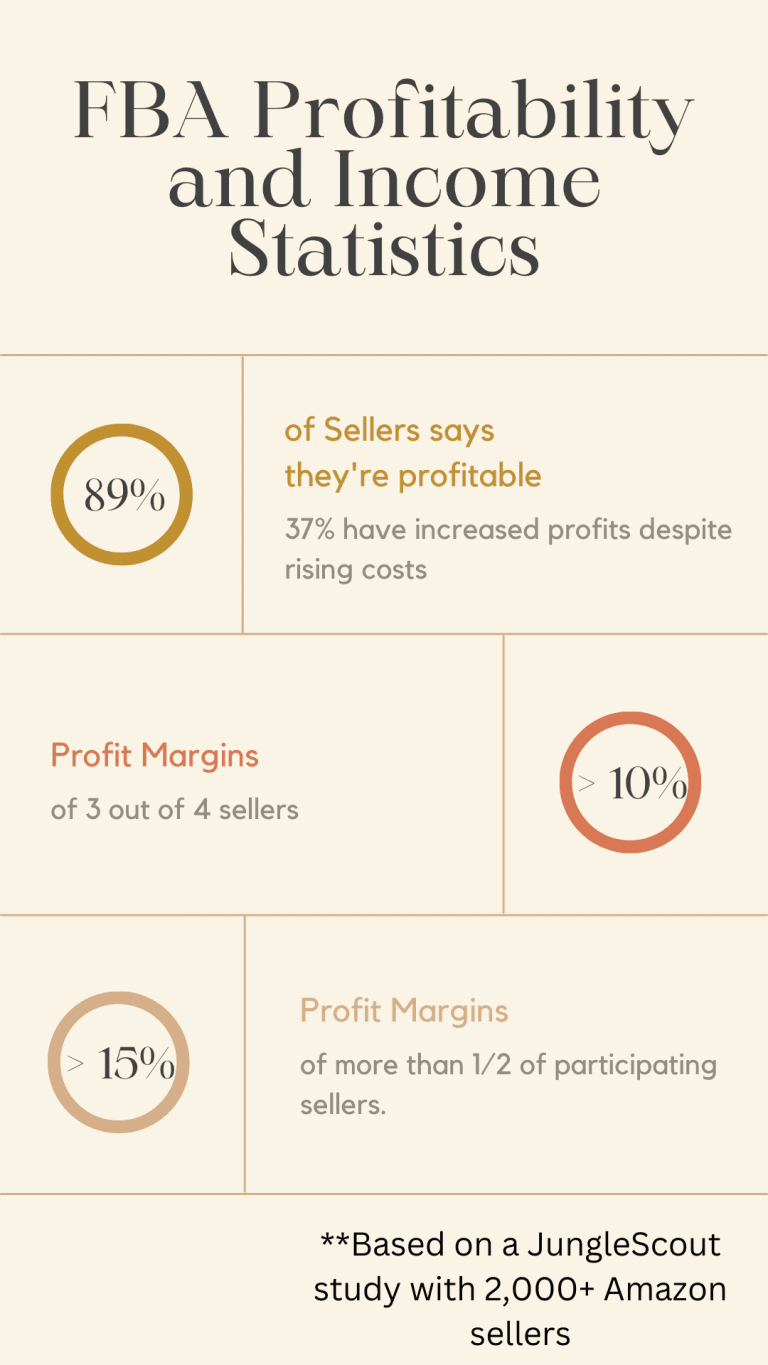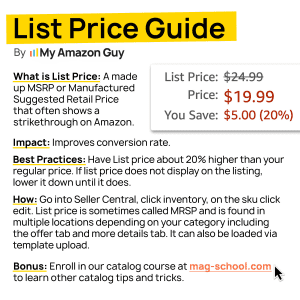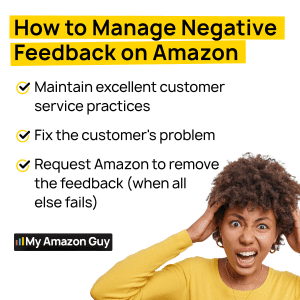“FBA profitability and income” is one of the topmost concerns of those who want to start an Amazon business. In this blog post, we’ll delve into the key information that can skyrocket your earnings on the Amazon platform.
As an Amazon seller, it’s important to consider the profitability and income of your FBA business as they have a direct impact on your financial success. To gain more knowledge and insight that can help you in your business planning, please keep reading below.
Important Statistics About Amazon FBA Profitability And Income
To better understand the potential of FBA profitability and income, let’s take a look at some eye-opening statistics to give you an idea of what percentage of FBA sellers are profitable.
Below are some of the interesting figures from JungleScout’s 2023 The State of the Amazon Seller survey.

Is it better to do FBA or FBM?
When it comes to fulfillment on Amazon, there are two main options: Fulfilled by Amazon (FBA) and Fulfilled by Merchant (FBM). FBA offers convenience and scalability, while FBM provides more control and potentially lower costs. We’ll explore the advantages and disadvantages of each method, helping you determine which one aligns best with your business goals.
Common Questions Asked About FBA Profitability And Income
Can you become a millionaire through Amazon FBA?
Amazon FBA has certainly made millionaires, but it’s important to understand that success is not guaranteed for everyone. We’ll delve into the factors that contribute to FBA profitability and income, such as product selection, marketing strategies, and operational efficiency.
While it’s possible to achieve significant success, it requires dedication, research, and continuous optimization.
Is it hard to make money with FBA?
While many sellers have found success and profitability with FBA, it is important to note that it can also be challenging for some.
How much can Amazon FBA make a month?
How much do Amazon sellers make a month? The amount of money you can make with Amazon FBA can vary greatly depending on various factors such as the product niche, competition, marketing efforts, and overall business strategy. Some Amazon FBA sellers generate a few hundred dollars per month, while others can reach five or six figures.
What is a good profit for Amazon FBA?
A good profit margin for Amazon FBA can vary depending on several factors, including the
- Product category
- Competition
- Overall business expenses
However, as a general guideline, a profit margin of around 20-30% is often considered a good benchmark for Amazon FBA sellers.
Profit Margin = Selling Price – (Cost of Goods Sold, Amazon fees, shipping costs, and other expenses)
With this formula in mind, ensure that you accurately track and account for all costs associated with selling on Amazon to determine the true profit margin.
Profit margins can fluctuate depending on various factors, and it’s important to continuously analyze and optimize your pricing, sourcing strategies, and operational efficiencies to maintain a healthy profit margin.
Additionally, staying informed about industry trends, implementing effective marketing strategies, and providing exceptional customer service can also contribute to maximizing your profit potential with Amazon FBA.
What is the average income for FBA?
The average income for FBA sellers can vary widely, as it is influenced by factors such as product selection, market demand, competition, and individual business strategies. It is difficult to provide an exact average income figure for all FBA sellers.
How much does it cost to start an Amazon FBA?
The cost to start an Amazon FBA business can vary depending on several factors. While I don’t have access to specific numbers, I can provide you with a general idea of the costs involved.
To get started with Amazon FBA, you’ll need to consider expenses such as product sourcing, inventory, packaging, shipping, and Amazon fees. Here are some of the main costs to consider:
- Product sourcing: This can vary greatly depending on the type of products you plan to sell. It can range from a few dollars for low-cost items to thousands of dollars for higher-priced products.
- Inventory: You’ll need to purchase inventory to stock your products. The cost of inventory will depend on the quantity and type of products you plan to sell.
- Packaging: You’ll need to package your products for shipment to Amazon’s fulfillment centers. The cost of packaging materials can vary depending on the size and nature of your products.
- Shipping: You’ll be responsible for shipping your products to Amazon’s fulfillment centers. The cost of shipping will depend on the weight, dimensions, and destination of your shipments.
- Amazon fees: Amazon charges various fees for using their FBA service, including storage fees, referral fees, and fulfillment fees. These fees can vary depending on the size and category of your products.
It’s important to note that these costs can add up, and it’s recommended to conduct thorough research and create a detailed budget before starting an Amazon FBA business.
Does Amazon pay you for FBA?
When a customer purchases a product that you have listed on Amazon, Amazon handles the payment processing and deducts any applicable fees, such as referral fees and fulfillment fees, from the sale amount.
After deducting these fees, Amazon will then deposit the remaining balance into your seller account. This balance can be periodically transferred to your bank account, based on your chosen payment schedule (e.g., weekly, bi-weekly, or monthly).
It’s important to note that the specific payment terms and schedule may vary depending on your individual seller account and location. Additionally, it’s crucial to carefully review and understand Amazon’s fee structure and payment policies to ensure accurate accounting and financial management of your FBA business.
Here’s a video of Steven Pope, My Amazon Guy’s founder and CEO, where he discussed about how to prioritize your Amazon FBA account for sales growth.
How hard is it to sell on Amazon?
Selling on Amazon comes with its own set of challenges. We’ll address common hurdles faced by Amazon sellers, such as competition, product listing optimization, and dealing with customer feedback.
By understanding these challenges, you can develop strategies to overcome them and increase your FBA profitability and income.
FBA Profitability and Income: Can You Make A Living With FBA?
Yes, it is possible to make a living with FBA. Many sellers have built successful and profitable businesses through Amazon’s platform. However, it’s important to note that making a living with FBA requires dedication, hard work, and effective business strategies.
To make a living with FBA, it’s crucial to
Select The Right Products
- Market Research: Conduct thorough market research to identify product opportunities. Look for products with high demand and low competition. Utilize tools like Jungle Scout, Helium 10, or AMZScout to gather data on sales volume, price history, and competition.
- Profitability Analysis: Evaluate the potential profitability of products by considering factors such as product cost, Amazon fees, shipping costs, and expected selling price. Calculate the profit margin to ensure it aligns with your business goals.
- Product Criteria: Define specific criteria for the products you want to sell. Consider factors like size, weight, durability, and ease of packaging. Identify products that are lightweight, non-fragile, and have minimal restrictions to reduce shipping and fulfillment costs.
- Niche Selection: Consider entering a specific niche or targeting a specific audience. Niches can offer opportunities for less competition and higher profit margins. Research trends, customer reviews, and feedback to understand customer preferences and pain points.
- Supplier Sourcing: Identify reliable suppliers or manufacturers for your chosen products. Consider factors such as quality, price, shipping options, and reliability. Attend trade shows, use online supplier directories, or consider sourcing from Alibaba or other platforms.
- Product Differentiation: Look for ways to differentiate your products from competitors. This can include improving product features, offering unique bundles or packaging, or focusing on a specific target audience.
- Test and Validate: Consider starting with a small order or conducting a product test before committing to a large inventory. This will help you assess market demand and customer response before scaling up.
Remember, selecting the right products is an ongoing process. Continuously monitor market trends, customer feedback, and competition to adapt your product selection strategy for better FBA profitability and income.
Watch another video from Steven to learn about the mistake to avoid when doing Amazon product research.
Conduct Thorough Market Research
- Identify Product Opportunities: Begin by brainstorming potential product ideas based on your interests, expertise, or market trends. Consider products that have high demand, low competition, and good profit potential.
- Utilize Amazon’s Best Sellers: Browse through Amazon’s Best Sellers and Hot New Releases sections to identify popular and trending products. Analyze the top-selling categories and products to understand market demand.
- Use Product Research Tools: Utilize product research tools like Jungle Scout, Helium 10, or AMZScout to gather data on sales volume, price history, competition, and other relevant metrics. These tools can provide insights into the market potential of specific products.
- Analyze Customer Reviews: Read customer reviews for products similar to your potential choices. Look for common complaints, suggestions, or improvements that can help you identify gaps in the market or opportunities to differentiate your product.
- Check Competitor Analysis: Analyze competitor listings to understand their pricing, product features, branding, and customer reviews. Identify opportunities to differentiate your product or offer additional value to customers.
- Keyword Research: Use keyword research tools like Google Keyword Planner or Sonar to identify popular search terms related to your product. This will help you optimize your product listings and improve visibility on Amazon.
- Evaluate Profitability: Calculate the potential profitability of your selected products by considering factors such as product cost, Amazon fees, shipping costs, and expected selling price. Ensure that the profit margin aligns.
Optimize Product Listings

- Keyword Research: Conduct thorough keyword research to identify relevant and high-volume keywords for your product. Incorporate these keywords strategically in your product title, bullet points, product description, and backend search terms to improve visibility in Amazon’s search results.
- Compelling Product Title: Create a clear and concise product title that includes relevant keywords and highlights the key features and benefits of your product. Ensure that it complies with Amazon’s guidelines and best practices.
- Engaging Bullet Points: Use bullet points to highlight the key features, specifications, and benefits of your product. Make them easy to read and scan, and consider using persuasive language to engage potential customers.
- Detailed Product Description: Write a detailed and informative product description that provides additional information about your product. Include relevant keywords naturally within the description, but focus on providing value and addressing customer pain points.
- High-Quality Product Images: Use high-resolution product images that showcase your product from different angles and highlight its features. Improve CTR by optimizing your main images.
- Enhanced Brand Content (EBC): If eligible, take advantage of Amazon’s Enhanced Brand Content feature (now known as A+ Content) to add additional images, videos, and detailed product descriptions to your product listings. EBC can help improve conversion rates and provide a more immersive shopping experience.
- Positive Customer Reviews: Encourage customers to leave positive reviews for your products by providing excellent customer service, addressing any issues promptly, and following up with customers after their purchase. Positive reviews can enhance your product’s credibility and increase conversion rates.
- Monitor and Optimize: Continuously monitor your product listings, track performance metrics, and make data-driven optimizations. Test different variations of titles, bullet points, and images to see what resonates best with your target audience.
Implement Effective Marketing Strategies
To market your business to improve FBA profitability and income, consider the following approaches:
- Amazon Advertising: Utilize Amazon’s advertising platform, such as Sponsored Products, Sponsored Brands, or Sponsored Display, to increase your product’s visibility and drive targeted traffic to your listings. Set a budget, select relevant keywords, and optimize your ad campaigns based on performance data.
- Social Media Marketing: Leverage social media platforms like Facebook, Instagram, or Twitter to promote your products and engage with your target audience. Create compelling content, run targeted ads, and utilize social media influencers to increase brand awareness and drive traffic to your Amazon listings.
- Content Marketing: Create valuable and informative content related to your products or industry. This can include blog posts, videos, or podcasts. Optimize your content for search engines to attract organic traffic and establish yourself as an authority in your niche.
- Email Marketing: Build an email list of interested customers and send regular newsletters or product updates to keep them engaged. Offer exclusive discounts or promotions to encourage repeat purchases and customer loyalty.
- Influencer Marketing: Collaborate with influencers or bloggers who have a relevant audience and a strong online presence. They can promote your products through reviews, unboxing videos, or sponsored posts, reaching a wider audience and driving traffic to your listings.
- Review Generation: Encourage customers to leave reviews for your products by providing exceptional customer service and following up with them after their purchase. Positive reviews can boost social proof and increase buyer confidence.
- Amazon Coupons and Promotions: Utilize Amazon’s promotional tools, such as coupons, lightning deals, or giveaways, to attract customers and increase sales. These promotions can help increase visibility, create a sense of urgency, and drive conversions.
- Social Proof and Branding: Build a strong brand presence on Amazon by optimizing your product listings with high-quality images, compelling copy, and engaging branding elements. Establish trust and credibility through positive customer reviews and ratings.
- Data Analysis and Optimization: Continuously analyze marketing performance metrics, such as click-through rates, conversion rates, and return on ad spend. Adjust your strategies based on the data to optimize your marketing efforts and maximize results.
To know how to triple your FBA profitability and income, take note of Steven’s tips in this video.
Provide Excellent Customer Service
Providing excellent customer service is crucial for any FBA business. Here are some key tips to ensure a great customer experience:
- Prompt and Clear Communication: Respond to customer inquiries and messages promptly. Be clear and concise in your communication to avoid any misunderstandings.
- Order Fulfillment and Shipping: Ensure that orders are processed and shipped out in a timely manner. Use reliable shipping carriers to minimize delays and provide tracking information to customers.
- Accurate Product Listings: Create detailed and accurate product listings, including clear descriptions, high-quality images, and relevant keywords. This will help customers make informed purchasing decisions and minimize the chances of returns or negative reviews.
- Packaging and Presentation: Pay attention to the packaging and presentation of your products. Use appropriate packaging materials to protect items during transit and consider including personalized touches like thank you cards or inserts to enhance the customer experience.
- Returns and Refunds: Have a clear and customer-friendly returns and refunds policy. Respond to return requests promptly and process refunds in a timely manner. Make the process as smooth as possible for the customer.
- Proactive Feedback Management: Regularly monitor and address customer feedback and reviews. Respond to both positive and negative reviews in a professional and courteous manner. Use feedback as an opportunity to improve your products or services.
- Continuous Improvement: Regularly evaluate and improve your customer service processes. Pay attention to customer feedback, identify any recurring issues, and take steps to address them. Aim to exceed customer expectations and provide a delightful experience.
Implement An Effective Pricing Strategy
- Research your competitors: Start by researching your competitors’ prices for similar products. This will give you an idea of the market range and help you identify areas where you can differentiate your pricing strategy.
- Understand your costs: Calculate all the costs associated with selling your product on Amazon, including manufacturing, shipping, storage, and Amazon fees. This will help you determine your desired profit margin.
- Determine your value proposition: Assess the unique value your product offers compared to competitors. If your product has superior features, quality, or brand reputation, you may be able to price it at a premium.
- Consider your target market: Understand your target customers and their purchasing behavior. Are they price-sensitive or willing to pay more for quality? This insight will guide your pricing decisions.
- Set a competitive and profitable price: Based on your research, costs, and value proposition, set a price that is competitive yet allows for a reasonable profit margin. It’s important to find a balance between attracting customers and maximizing FBA profitability and income.
- Monitor and adjust: Regularly monitor your pricing strategy and make adjustments as needed. Keep an eye on market trends, competitor pricing changes, and customer feedback to stay competitive.
Follow the guide in this infographic for your pricing strategy.

Manage Inventory And Logistics
Managing inventory and logistics effectively is crucial for improving FBA profitability and income.
Learn how to manage FBA inventory by watching this video:
Leverage Customer Reviews And Feedback
- Monitor and respond to reviews: Regularly monitor customer reviews of your products on Amazon. Respond promptly and professionally to both positive and negative reviews. Thank customers for positive feedback and address any concerns or issues raised in negative reviews. This shows that you value customer feedback and are committed to providing a great experience.
- Use reviews to improve products: Analyze customer reviews to gain insights into what customers like and dislike about your products. Use this feedback to make product improvements or enhancements. Identifying and addressing common pain points can lead to higher customer satisfaction and increased sales.
- Incorporate customer feedback into product development: Actively seek feedback from customers through surveys or follow-up emails. Use this feedback to inform your product development process. By involving customers in the product development cycle, you can create products that better meet their needs, improving customer satisfaction and loyalty.
- Highlight positive reviews in marketing efforts: Showcase positive customer reviews in your marketing materials, such as on your website or social media platforms. Positive reviews serve as social proof and can help build trust with potential customers.
- Use feedback to optimize listings: Pay attention to the language and keywords customers use in their reviews. Incorporate this language into your product listings to improve search visibility and attract more relevant customers.

- Address negative feedback and resolve issues: Negative reviews present an opportunity to address customer concerns and improve your brand reputation. Reach out to customers who leave negative reviews and offer solutions or replacements if necessary. Demonstrating your commitment to customer satisfaction can help turn negative experiences into positive ones.
- Encourage customers to leave reviews: Proactively encourage customers to leave reviews by including review request cards or follow-up emails. Make it easy for customers to leave feedback by providing clear instructions and links to review pages.
Utilize Amazon FBA tools and Resources
Utilizing Amazon FBA tools and resources can greatly benefit your business and help increase profitability. In Seller Central, there are various tools like the advertising platform, inventory management tools, pricing and competitor analysis, review and feedback management, FBA fee calculators, and seller forums and support.
Can anyone be successful with Amazon FBA?
While Amazon FBA offers opportunities for success, it’s not a guaranteed path for everyone. We’ll discuss the importance of strategic planning, market research, and continuous improvement to increase your chances of success. By leveraging the right tools and resources, anyone with determination and a solid plan can increase their chances of success on the Amazon platform.
Conclusion
Successfully navigating the world of Amazon FBA requires careful consideration of various factors. By understanding the differences between FBA and FBM, calculating profitability benchmarks, and implementing effective strategies, you can position your Amazon business for success. Remember, it’s not just about choosing the right fulfillment method, but also about continuously optimizing your operations and staying ahead of the competition. Don’t miss out on the opportunity to maximize your Amazon FBA profitability with our comprehensive guide.






